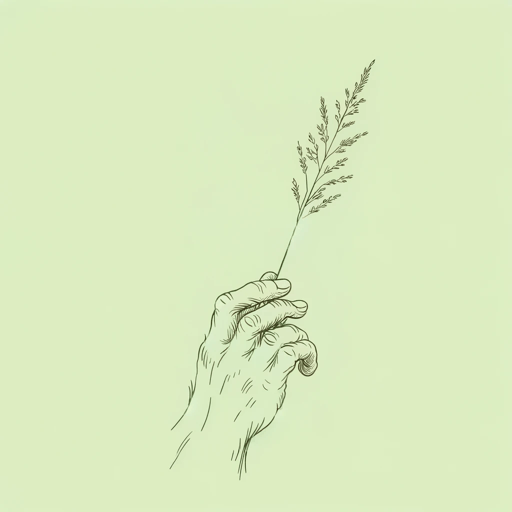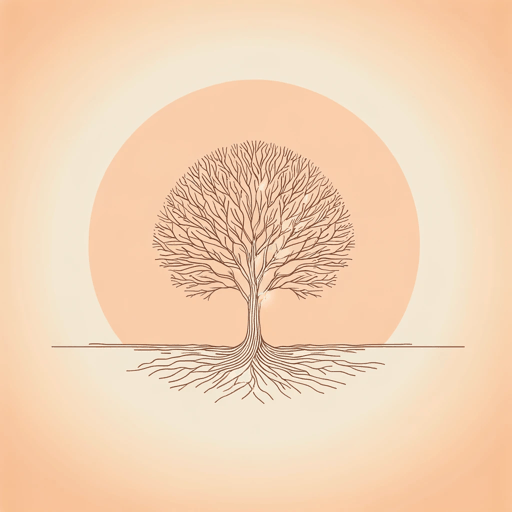62 pages • 2 hours read
Jane GoodallIn the Shadow of Man
Nonfiction | Book | Adult | Published in 1971A modern alternative to SparkNotes and CliffsNotes, SuperSummary offers high-quality Study Guides with detailed chapter summaries and analysis of major themes, characters, and more.
Summary and Study Guide
Overview
Published in 1971, In the Shadow of Man is the third and most famous book by British primatologist Dr. Jane Goodall. The work details Goodall’s groundbreaking study of chimpanzees in Tanzania’s Gombe Stream National Park and her unlikely journey from being a secretary in the UK to heading a major chimpanzee study in East Africa and becoming one of the world’s foremost primatology experts. Functioning as both a memoir and a scientific exploration of chimp behavior, the book weaves Goodall’s personal narrative into explanations of her daily observations of chimps and her study’s scientific significance. Goodall’s work explores humans’ relationship with chimps, the role of mothers in chimp groups, the joys and challenges of working with wildlife, and the scientific perception and knowledge of primates. In addition, her book provides a window into 1960s colonial East Africa from the perspective of a European woman researcher.
This study guide refers to the Kindle edition of the book.
Plot Summary
Chapters 1 and 2, “Beginnings” and “Early Days,” explain how Goodall first traveled to East Africa in her early twenties. She yearned to see African wildlife and worked as a secretary in the UK to save money for a trip. Friends in Kenya introduced her to British anthropologist and paleontologist Louis Leakey, the curator at the National Museum of Natural History in Nairobi. Goodall was thrilled to accept the position of assistant secretary there and accompanied Leakey on paleontological digs in the Olduvai Gorge. Leakey then offered her the opportunity to conduct a study on chimps in the wild. After months of preparation, Goodall (with her mother, Vanne Goodall) began research in Tanzania’s Gombe National Park. Chapter 3, “First Observations,” describes the study’s early challenges and progress. Finding the chimps—and observing them without spooking them—was difficult, and Goodall and her mother contracted malaria and were bedridden for two weeks. The chimps gradually became accustomed to Goodall’s presence, and she made significant observations of their displays of affection, greeting calls, territorial gestures, and social dynamics—as well as unexpected observations of chimps eating a bush piglet and using grass stems as tools to fish termites from their nests. These discoveries helped her obtain funding to continue her study.
In Chapter 4, “Camp Life,” Goodall describes daily life in the Gombe camp. Her mother helped her establish good relationships with the local people by setting up a clinic and offering medical supplies and advice. The Goodalls lived in a simple tent shelter and crossed Lake Tanganyika to Kigoma for supplies. Chapter 5, “The Rains,” reflects on Goodall’s first rainy season in Gombe, which complicated binocular use, note-taking, and observing the chimps from a distance. Goodall was astonished to witness a “rain dance” in which male chimps performatively waved branches and charged down a hill in the rain. After her mother returned to England, Goodall adjusted to living alone. She had more close-up encounters with the chimps, who became hostile and territorial toward her but eventually grew more accepting and less aggressive. Additionally, Louis Leakey secured her a spot to earn a PhD from Cambridge University in ethology (animal behavior). In Chapter 6, “The Chimps Come to Camp,” Goodall recalls how she missed Gombe during her first term at Cambridge. When she returned, David Graybeard, an adult male chimp, began venturing into the camp, sometimes with two other males. Goodall was thrilled to observe them up close and offered them bananas.
In Chapter 7, “Flo’s Sex Life,” Goodall describes female Flo’s mating period, which revealed much about chimp reproduction. All the adult males mated with Flo; adolescent males, while clearly interested, weren’t permitted to approach her. Goodall was fascinated by Flo’s affectionate bond with Rodolf, a male chimp, and the lack of competition among adult males for access to Flo. She later birthed a male whom Goodall named Flint. Chapter 8, “The Feeding Station,” describes Goodall’s effort to control how much fruit the chimps ate at the camp, her subsequent return to the UK for her third term at Cambridge, and her marriage to Hugo van Lawick later that year in London. Back at Gombe, Goodall, van Lawick, and their helpers moved the feeding station further from camp because of baboon conflicts and the chimps’ increasingly bold antics. Goodall documents another example of tool creation and use, when chimps made sponges from crumpled and chewed leaves to drink water. In Chapter 9, “Flo and Her Family,” Goodall discusses how Flo’s other offspring responded to Flint. While his brothers, Figan and Faben, largely ignored the newborn, his sister, Fifi, was keenly interested. Flo eventually trusted Fifi to hold and even carry Flint, and Goodall observed his brothers taking him to persuade their mother to go with them somewhere else.
Chapter 10, “The Hierarchy,” examines the fluidity of status within the chimp group and explains how male chimp Mike rose from a low position to become the dominant male within a few years. In addition, Goodall notes that females were almost always submissive to adult males but maintained a complex hierarchy among themselves using calls, body language, and violent attacks. The author hypothesized (but was unable to confirm) that the long-term friendships she witnessed in the group occurred between siblings. In Chapter 11, “The Growth of the Research Center,” Goodall recounts how the National Geographic Society helped fund an expansion of the camp for research students to conduct studies. Unfortunately, by this time the chimps were overly familiar with people, competing aggressively at the feeding station and raiding the camp for food. The researchers tried to resolve this issue through irregular feedings and more resilient feeding boxes. In addition, Goodall mandated limited physical contact with chimps.
In Chapters 12-14—“The Infant,” “The Child,” and “The Adolescent”—Goodall investigates chimp development to adulthood. She discusses individual parenting approaches, contrasting maternal Flo with negligent Olly and Passion. Goodall reveals that though male and female chimps behave similarly when young, males exhibit aggressive and sexual behavior before females do. Chapter 15, “Adult Relationships,” focuses on sexual behavior, revealing that female chimps are infrequently fertile and usually mate with most males in their group. Goodall notes the general lack of affection and bonding between mating adults and ponders the evolutionary reason for females’ dramatic genital swelling during estrus. In Chapter 16, “Baboons and Predation,” Goodall describes chimp-baboon dynamics, which range from mutual playfulness to chimps preying on baboons. In Chapter 17, “Death,” Goodall shares how six Gombe chimps died during a polio epidemic. The author hypothesizes that they contracted polio from human communities and recounts how she saved some chimps by administering oral vaccines. Goodall admits that this epidemic was the most painful period of her life, as many chimps became severely disabled and their peers rejected them.
Chapter 18, “Mother and Child,” explores the crucial mother-offspring bond, reiterating that female chimps are unique individuals whose different parenting decisions inform offspring health and behavior throughout life. Goodall ponders why orphaned chimps struggle when their mothers die, even though they can physically survive without them, and reports that some orphans perish because of prolonged sadness rather than lack of sustenance. In Chapter 19, “In the Shadow of Man,” Goodall compares human and chimps, noting the many similarities in hierarchies, body language, and tool use, but emphasizing differences in communication, intelligence, and social skills. She sympathizes with chimps, who—despite obvious intelligence and sentience—live in the “shadow” of humans. Goodall further develops this idea in Chapter 20, “Man’s Inhumanity.” She condemns people’s cruelty to chimps, identifying poachers, zoos, and medical laboratories as threats to chimp safety and welfare, and advocates for a more respectful relationship between the species. The final chapter, “Family Postscript,” provides updates on Goodall’s work and family life. As more research students observed the Gombe chimps, Goodall and van Lawick traveled to study other animals such as hyenas, and she took more breaks from Gombe to be with her son, Grub. In closing, Goodall shares a special memory of her time with chimp David Graybeard in Gombe before her study became such a success.
Related Titles
By Jane Goodall
Featured Collections
Animals in Literature
View Collection
Anthropology
View Collection
Books on Justice & Injustice
View Collection
Books that Teach Empathy
View Collection
Earth Day
View Collection
Forgiveness
View Collection
Nature Versus Nurture
View Collection
Science & Nature
View Collection
STEM/STEAM Reads
View Collection



